Inclusion Equality
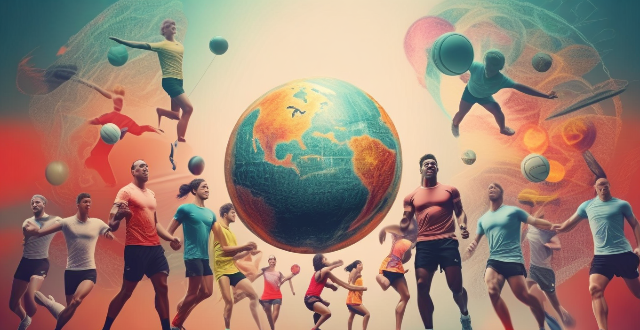
To what extent does the globalization of sports contribute to social equality and inclusion ?
The globalization of sports has led to increased opportunities for athletes from different backgrounds and cultures, but also poses challenges to social equality and inclusion. Efforts are needed to address these challenges and promote fairness, inclusivity, and respect for all athletes.
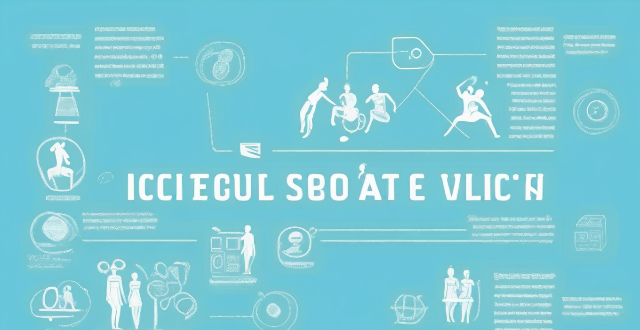
What are some examples of successful initiatives that use sports to promote social inclusion ?
This text discusses successful initiatives that use sports to promote social inclusion. It highlights five examples of such initiatives: Street Football World, Homeless World Cup, Wheelchair Basketball Initiatives, Sporting Equals, and Gender Equality in Sports Programs. These initiatives aim to unite people through football, inspire homeless people, promote disability inclusion, challenge discrimination in British Asian communities, and encourage women's participation in various sports, respectively. The activities include global tournaments for marginalized communities, international tournaments for homeless teams, local wheelchair basketball leagues, community cricket events, and women's sports leagues. The impact of these initiatives is significant, with increased public awareness about homelessness, personal transformation stories of participants, improved physical fitness and self-esteem among disabled individuals, reduced instances of racism and discrimination in sport, and higher visibility and recognition of women in sports.

What is social inclusion and why is it important ?
Social inclusion refers to the process of ensuring that all individuals can participate in all aspects of society. It aims to create a society where everyone feels valued, regardless of their background. Key elements include equal opportunities, non-discrimination, participation, empowerment, and solidarity. Social inclusion is important for promoting equity and fairness, enhancing economic growth, improving health and well-being, reducing poverty and exclusion, enhancing social cohesion, and supporting sustainable development.

How does gender equality affect participation in competitive sports ?
Gender equality is a fundamental human right that ensures individuals are not discriminated against based on their sex. In the realm of competitive sports, gender equality can significantly influence participation rates, access to resources, and overall opportunities for athletes. This discussion will explore how gender equality affects participation in competitive sports. The importance of gender equality in sports includes equal opportunities, media coverage and representation, financial support and sponsorship, and safety and well-being. Challenges faced due to lack of gender equality include unequal participation rates, limited career opportunities, and cultural barriers. Strategies to promote gender equality in sports include policy changes, education and awareness, and supportive infrastructure development. In conclusion, gender equality plays a crucial role in determining participation rates in competitive sports. By addressing issues such as unequal opportunities, media representation, financial support, safety concerns, and cultural barriers, we can create a more inclusive environment that encourages females to engage actively in sports. Through policy changes, educational initiatives, and supportive infrastructure development, we can promote gender equality within the world of competitive sports, ensuring that talent and passion are the only determining factors for success.
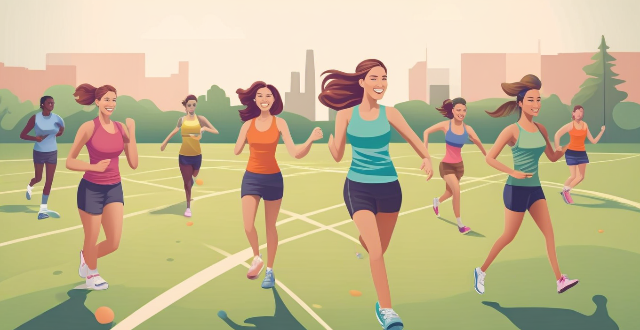
Can sports be used as a tool for breaking down social barriers and promoting equality ?
The power of sports to bring people together and foster a sense of community is undeniable. However, the question remains: can sports be effectively utilized as a tool for breaking down social barriers and promoting equality? Sports organizations are increasingly recognizing the importance of diversity both on the field and off. By actively recruiting athletes from different backgrounds, sports can serve as a visible symbol of inclusion. Through exposure to diverse teams and athletes, sports can help dispel stereotypes and prejudices, encouraging fans and participants alike to appreciate the unique talents and contributions of individuals regardless of their background. Participation in sports teaches valuable life skills such as teamwork, discipline, and perseverance, which can be instrumental in overcoming social barriers. Success in sports can empower individuals, particularly women and minorities, by providing a platform for them to showcase their abilities and achieve recognition. Major sporting events can stimulate local economies by creating jobs and promoting tourism. Investments in sports facilities can revitalize neglected areas, providing much-needed resources and encouraging further development. Grassroots sports programs can engage community members, fostering a sense of belonging and pride that extends beyond the playing field. Unequal distribution of resources can hinder the ability of some communities to fully participate in sports. Physical accessibility for athletes with disabilities remains a crucial issue that needs to be addressed comprehensively. Ensuring equal opportunities and treatment for female athletes continues to be a focal point in the fight for equality in sports. Efforts to promote diversity must be genuine and avoid tokenism, ensuring that all participants feel valued and respected. Organizations must continuously assess their progress toward inclusivity and make necessary adjustments to maintain effectiveness. Educating stakeholders about the importance of inclusivity and equity is essential for maintaining momentum and driving change.

How does Fintech impact financial inclusion ?
Fintech has revolutionized financial services, making them more accessible and affordable. It has increased accessibility for unbanked populations, lowered costs, improved efficiency, driven innovation, enhanced security, promoted financial literacy, facilitated inclusion initiatives, enabled digital identity verification, supported microfinance and crowdfunding, and promoted mobile money and payment systems. These advancements have significantly impacted financial inclusion worldwide.

How has sports contributed to gender equality ?
Sports have contributed to gender equality by increasing participation, equal pay, media coverage, and female leadership in sports administration.

How does sports contribute to social inclusion ?
Sports have the power to promote social inclusion by breaking down barriers, promoting teamwork, providing opportunities for participation, building confidence and self-esteem, and promoting health and wellbeing.

How does social inclusion relate to diversity and multiculturalism ?
The article discusses the relationship between social inclusion, diversity, and multiculturalism. It defines each concept and explains their importance in promoting equality, participation, and belonging. The article also highlights the benefits of diversity and multiculturalism, such as enhanced creativity and understanding among different cultural groups. The intersectionality of these concepts is explored, along with examples of inclusive policies and practices. Education is emphasized as a crucial tool for promoting social inclusion, diversity, and multiculturalism. Overall, the article concludes that these interconnected concepts are essential for building a more equitable and harmonious society.
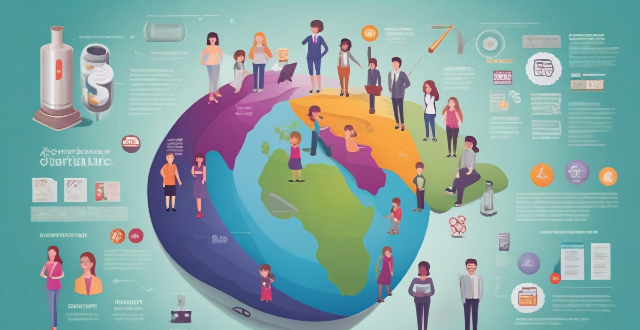
How have women's empowerment initiatives affected gender equality globally ?
The essay discusses the impact of women's empowerment initiatives on gender equality globally. The initiatives have increased access to education and training for women, leading to their active participation in public life. They have also provided economic empowerment through financial resources, microfinance loans, and entrepreneurship training programs, resulting in greater gender equality in the workplace. Health and reproductive rights have been improved through awareness campaigns and advocacy for policies supporting family planning and contraception. Finally, these initiatives have encouraged women's political participation, creating a more diverse and representative government. Overall, women's empowerment initiatives have played a crucial role in promoting gender equality worldwide.

What is the role of gender equality in achieving climate justice and sustainability ?
Gender equality is a key component in achieving climate justice and sustainability. It ensures equal opportunities for all individuals to participate in decision-making processes related to climate change mitigation and adaptation strategies, including access to education, healthcare, and economic resources. Gender equality recognizes the vulnerabilities of women and girls affected by climate change, promotes inclusivity, enhances resilience, drives innovation, and addresses intersectionality. Strategies for achieving gender equality in climate action include incorporating gender perspectives into policies, increasing representation, providing resources, encouraging collaboration, monitoring progress, educating stakeholders, advocating for legal protections, promoting cultural change, supporting research, and sharing best practices.

How can companies promote gender equality in the workplace ?
In full: Companies can promote gender equality in the workplace by implementing gender-neutral hiring practices, providing equal opportunities for advancement, ensuring equitable pay and benefits, fostering an inclusive culture, addressing harassment and discrimination, supporting women in non-traditional roles, and celebrating achievements and diversity.
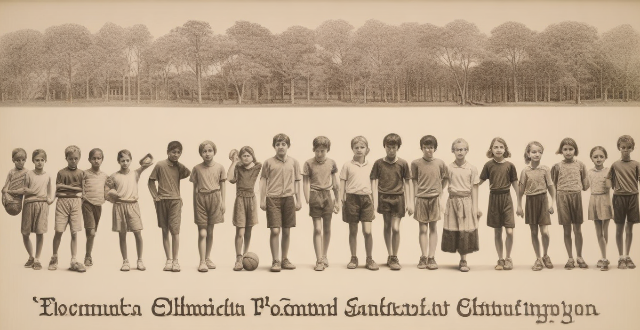
In what ways can we promote gender equality in sports for young children ?
Gender equality in sports is crucial for fairness and respect, especially among young children. To promote this, mixed-gender teams should be encouraged, equal opportunities provided, non-binary athletes supported, coaches and parents educated about gender equality, diversity celebrated, gender bias addressed, and safe spaces created for all athletes.

What role do sports play in promoting diversity and inclusion in society ?
The text discusses the various ways in which sports can contribute to promoting diversity and inclusion. This includes breaking down stereotypes and prejudices, highlighting achievements of underrepresented groups, providing equal opportunities, fostering cultural exchange, encouraging respect and fair play, and promoting health and wellness for all. It emphasizes that sports serve as a powerful vehicle for promoting diversity and inclusion in society by breaking down barriers, providing equal opportunities, fostering cultural exchange, encouraging respect and fair play, and promoting health and wellness for all.

How do urban policies address issues of access and inclusion in sports facilities ?
Urban policies are crucial in addressing access and inclusion in sports facilities. They can promote this through public funding and investment, community engagement, equitable distribution, and promotion of diversity and inclusion. Examples include constructing public parks, upgrading existing facilities, conducting community surveys, partnering with local organizations, implementing zoning regulations, introducing mobile sports programs, establishing gender-specific facilities, and offering culturally sensitive programs.

How do these education policy updates address issues related to diversity and inclusion ?
Education policy updates are crucial for addressing diversity and inclusion in schools. They aim to create an equitable learning environment that caters to the needs of all students, regardless of their background or identity. These updates contribute to promoting diversity and inclusion by recognizing and valuing diverse perspectives, providing access to education for all students, promoting cultural competency among educators, encouraging inclusive curriculum design, addressing bias and stereotyping, and supporting special education needs. By implementing these policies, schools can create a more equitable and inclusive learning environment that benefits all students, regardless of their background or identity.

What role do sports organizations play in promoting gender equality within their leagues or competitions ?
Sports organizations have a crucial role to play in promoting gender equality within their leagues or competitions. They can ensure that all athletes, regardless of their gender, have equal opportunities to participate and succeed in sports through various measures such as ensuring equal representation, providing equal pay and prize money, creating safe and inclusive environments, promoting female athletes as role models, and offering educational programs and workshops focused on gender equality in sports. By implementing these measures, sports organizations can create a culture of respect and inclusivity while ensuring that all athletes have equal opportunities to participate and succeed in sports.

What are the benefits of social inclusion for individuals and society as a whole ?
Social inclusion benefits individuals and society by promoting equality, diversity, and participation. Individuals experience enhanced quality of life, greater opportunities, improved mental health, increased self-esteem, and strengthened social support networks. Society benefits from economic growth, reduced poverty and inequality, improved public services, enhanced social cohesion, increased civic engagement, promotion of human rights, a positive global image, and intergenerational equity.
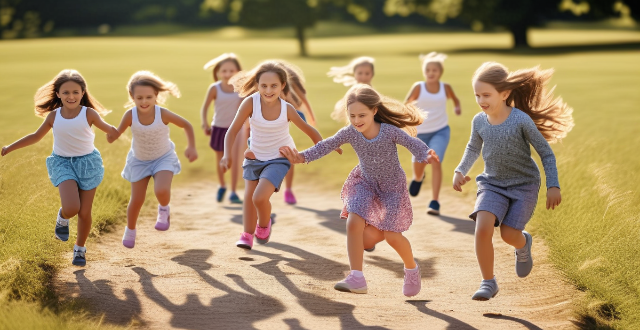
How can we use sports to promote gender equality and empower women and girls ?
Promoting gender equality and empowering women and girls through sports involves increasing visibility, ensuring fair representation, improving access and inclusivity, providing education and training, implementing policy and legislation, promoting health and wellness, encouraging economic empowerment, engaging the community, and fostering cultural change. These efforts aim to break down barriers, challenge stereotypes, and create opportunities for women and girls to thrive both on and off the field.

What role do governments play in promoting social inclusion ?
Governments play a critical role in promoting social inclusion by enacting laws and policies that protect the rights of marginalized groups, investing in education and training programs, providing economic support, and supporting community building efforts.

What role does sports play in promoting cultural diversity and inclusion ?
Sports play a significant role in promoting cultural diversity and inclusion by breaking down barriers, educating about different cultures, building communities, and contributing positively to economic development.

How can schools and educational institutions foster social inclusion ?
Educational institutions can foster social inclusion by promoting diversity, creating a welcoming environment, supporting inclusive policies, training educators, adapting teaching methods, collaborating with families and communities, and addressing systemic barriers.

What are some examples of successful social inclusion initiatives ?
以下是文本的主题摘要: **成功社会包容倡议** 社会包容倡议旨在创造一个无论背景如何,每个人都能完全参与并为其社区做出贡献的社会。这些倡议通常关注边缘化群体,如残疾人、少数族裔、LGBTQ+个体以及经历贫困或无家可归的人。以下是一些成功社会包容倡议的例子: ### 1. 澳大利亚国家残疾保险计划(NDIS) - **地点:**澳大利亚 - **关注对象:**残疾人 - **描述:**NDIS是澳大利亚社会部门的重大改革,直接为残疾人提供资金,以购买他们需要更多独立生活的支持和服务。 - **成果:**提高了残疾人在社区中的独立性和参与度。 ### 2. 全球彩虹旗项目 - **地点:**全球 - **关注对象:**LGBTQ+个体 - **描述:**该项目涉及在公共空间悬挂彩虹旗,以促进对LGBTQ+个体的接纳和包容。 - **成果:**提高了全球各地社区中LGBTQ+个体的可见度和接纳度。 ### 3. 英国女性企业基金 - **地点:**英国 - **关注对象:**来自少数族裔背景的女性企业家 - **描述:**该基金为希望创办或发展自己生意的来自少数族裔背景的女性提供贷款和补助。 - **成果:**经济赋权,增加了少数族裔背景的女性在商业所有权中的代表性。 ### 4. 加拿大无家可归青年项目 - **地点:**加拿大 - **关注对象:**经历无家可归的年轻人 - **描述:**该项目提供一系列服务,包括庇护所、咨询和就业培训,帮助经历无家可归的年轻人。 - **成果:**为经历无家可归的年轻人提供了基本需求、心理健康支持和就业机会的改善途径。 ### 5. 德国移民融合项目 - **地点:**德国 - **关注对象:**移民和难民 - **描述:**该项目提供语言课程、文化导向和就业培训,以帮助移民和难民融入德国社会。 - **成果:**增加了移民和难民在德国的就业机会和社会融入。 ### 6. 澳大利亚土著健康项目 - **地点:**澳大利亚 - **关注对象:**澳大利亚土著居民 - **描述:**该项目旨在通过解决糖尿病、心脏病和烟草使用等问题,提高澳大利亚土著居民的健康成果。 - **成果:**改善了澳大利亚土著居民与非土著居民之间的健康差异。 ### 7. 瑞典性别平等项目 - **地点:**瑞典 - **关注对象:**妇女和女孩 - **描述:**该项目旨在通过解决针对妇女的暴力、教育中的性别刻板印象和不平等薪酬等问题,促进性别平等。 - **成果:**提高了对性别平等问题的认识,为妇女和女孩提供了更好的法律保护,减少了瑞典社会中的性别不平等。
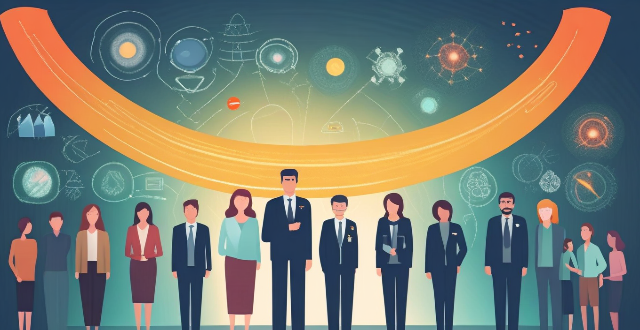
How can we promote gender equality in climate policy making ?
Promoting gender equality in climate policy making is crucial for ensuring inclusive policies that address the needs of all genders and harness the potential of everyone in combating climate change. Key strategies include ensuring equal representation of men and women at all levels of decision-making, addressing gender-specific impacts of climate change, promoting education and training, collaborating with women's organizations, and creating safe spaces for open expression. By implementing these measures, we can move towards more effective and equitable solutions to tackle climate change.

What is the role of sports sponsorship in promoting gender equality in sports ?
Sports sponsorship is crucial for promoting gender equality in sports. It provides financial support to female athletes, increases visibility of women's sports, creates role models, and promotes equity by ensuring equal funding for both men's and women's sports. This helps break down barriers and create opportunities for female athletes to compete at the highest levels.

What is the current state of diversity and inclusion in the entertainment industry ?
"探讨娱乐产业中多元化与包容性的现状,包括荧幕代表性、幕后工作群体多样性、观众接受度以及面临的挑战和机遇。尽管已取得一定进展,但实现真正的代表权和平等仍需努力。行业需解决系统性问题,重视真实多元故事的讲述,并为有志艺术家提供教育和培训机会。"

How can we promote diversity and inclusion in a multicultural society ?
This topic discusses strategies to promote diversity and inclusion in a multicultural society, including education, legislation, community engagement, media representation, business leadership, and personal actions.

What is the significance of the Green Climate Fund in supporting climate initiatives globally ?
The Green Climate Fund (GCF) supports climate initiatives globally by providing financial and technical resources for mitigation and adaptation projects. It encourages private sector participation, strengthens institutions, and promotes gender equality and social inclusion in climate actions.

What policies or initiatives have been implemented to ensure equal pay and opportunities for both men and women in professional sports ?
In recent years, there has been a growing movement to ensure equal pay and opportunities for both men and women in professional sports. This has led to the implementation of various policies and initiatives aimed at achieving gender equality in sports, including gender equality laws and regulations, collective bargaining agreements (CBAs), wage transparency policies, gender quotas and targets, gender equality initiatives and programs, and improved media coverage and representation of women's sports. While progress has been made towards ensuring equal pay and opportunities for both men and women in professional sports, there is still much work to be done. By continuing to implement policies and initiatives that promote gender equality, sports organizations can create a more inclusive environment where all athletes can thrive regardless of their gender.

How does climate change affect gender equality ?
The text discusses the impact of climate change on gender equality, highlighting increased vulnerabilities for women in health, economics, and social factors. It further points out how climate change exacerbates existing inequalities through gender-based violence and educational setbacks. However, it also identifies opportunities for resilience and empowerment through resilient livelihoods, enhanced participation, and improved health and safety measures. The conclusion emphasizes the importance of addressing climate change with a gender lens to achieve sustainable development and a more equitable future.